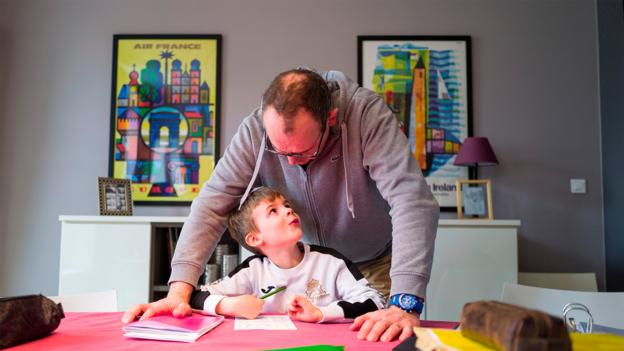This, experts suggest, may come down to combination of measures. Good planning, structure, creativity and flexibility can all help you create an environment in which everyone can fulfil their obligations – while maintaining family harmony.
Communicate a family plan
With a house full of kids and working parents, it’s important to be realistic about your working situation and the willpower it will take to succeed – and that means taking time to explain what’s happening.
“Be overly communicative and set boundaries,” says Tonya Dalton, a productivity consultant in Ashville, North Carolina in the US. Being transparent about every family member’s schedule can make it easier for children to understand when you’re off limits, she explains. “It’s okay if you want to talk to your kids to take your mind off work, but it needs to be siloed to work breaks.”
Want to share your experiences or tips working from home? Join the conversation on our LinkedIn page.
Scheduling is vital, but when it comes to setting out your timetable, don’t try to mimic your day at the office; it’s important to acknowledge that the situation has changed. Instead, create a daily plan for the entire family that includes work and school schedules, and make it easily visible to everyone, says Holland Haiis, a New York-based professional speaker focusing on professional development and human connection. “It lets everyone know what they can expect next in this new environment where everything feels a little different.”
For Ingrid Jansen, committing her husband and two children to the same weekday routine is making it easier for the entire family to adjust. “We recently agreed on a daily schedule that involves having breakfast, lunch and dinner at the same time daily, adding in two exercise breaks with walking and cycling… and we are adding in time for chores,” says Jansen, the founder of an online de-cluttering business who is based in London. (Jansen spoke to the BBC before new restrictions came in limiting people to one external exercise period per day.)













